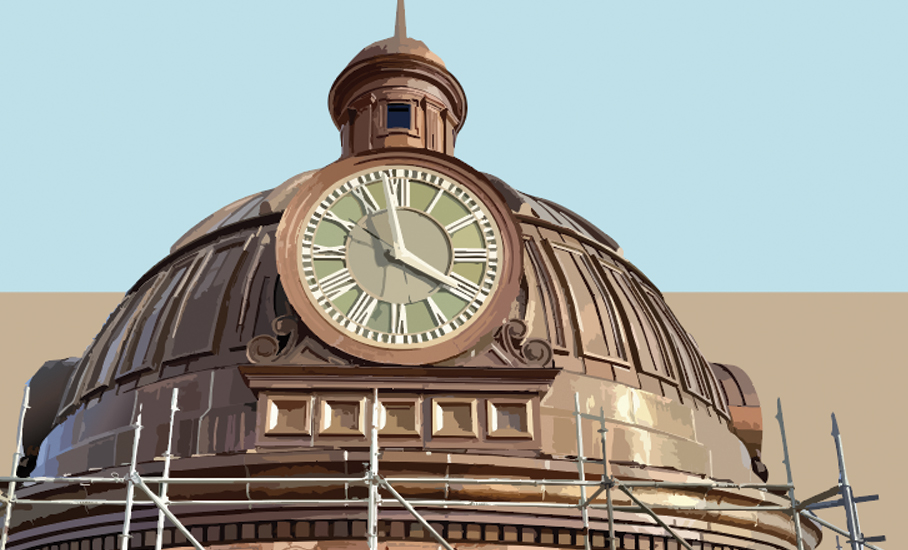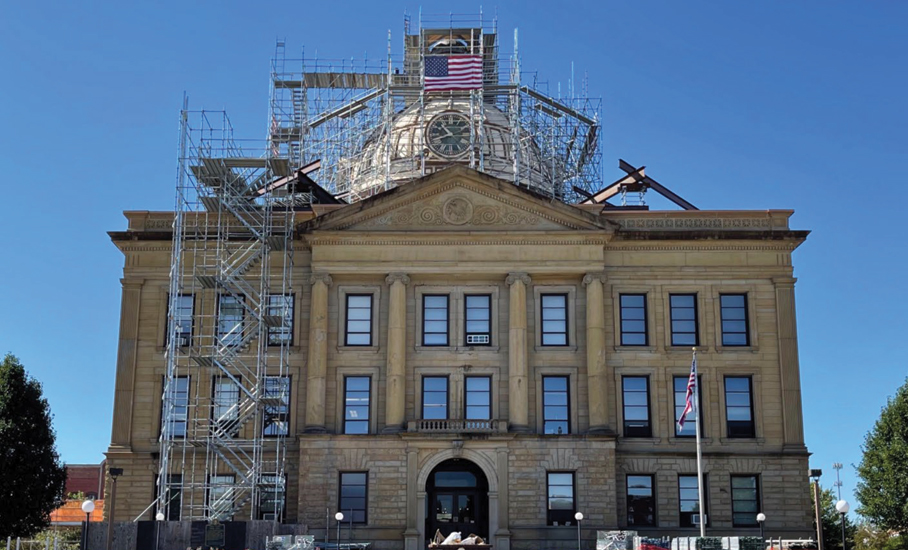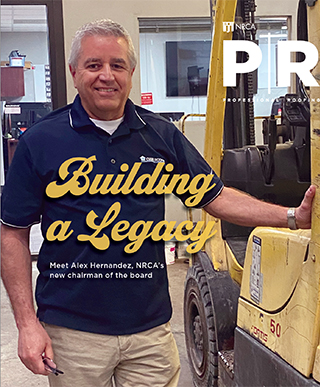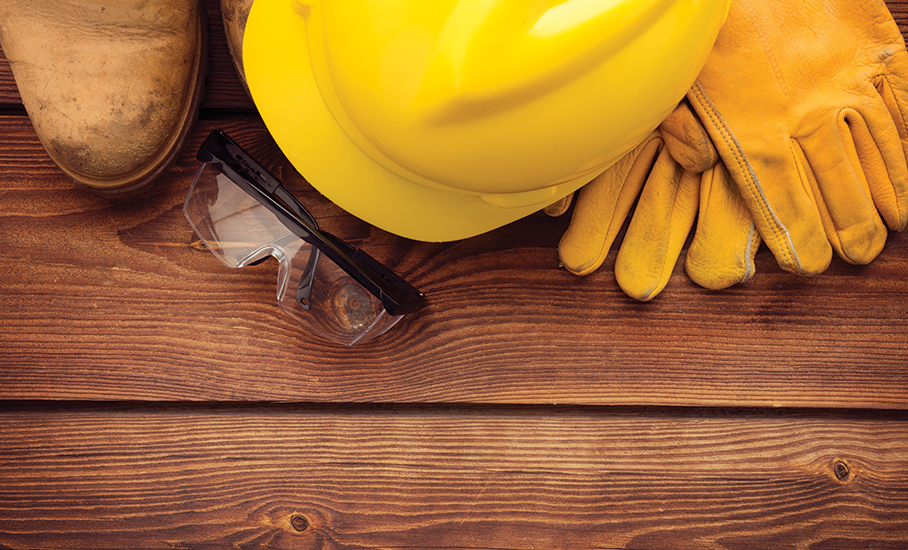
Located 35 miles north of the Illinois State Capitol, Logan County Courthouse in Lincoln, Ill., is one of two remaining courthouses where Abraham Lincoln practiced law. In 1858, the courthouse was constructed in a Classical Revival design using Cleveland sandstone.
In 1903, the building was disassembled and rebuilt with Romanesque architectural features that include four 20-foot-tall, 3-foot-diameter columns at four courthouse entrances. Each column bears stone carvings representing the state seal of Illinois. In 1985, the building was listed on the National Register of Historic Places.
The building is topped with a copper dome, one of the largest in the state, and is celebrated for its striking clock tower and intricately designed interior. In 2022, the iconic dome showed signs of significant deterioration and needed restoration. The Durable Slate Company, Columbus, Ohio, was selected as the roofing contractor for the project.
Assessment
The Logan County Courthouse dome originally was constructed with a coated steel frame overlaid with steel lath that was covered with a three-part stucco system used as the surface shell for the metalwork.
“Interior inspections revealed areas of water intrusion and deterioration in the stucco though the steel frame remained largely unaffected,” says Jason Lee, AVP restoration for The Durable Slate Company. “Overall, the stucco was found to be in good condition.”
Team members removed exterior cladding to expose the stucco and assess the extent of repairs needed. Because of multiple layers of applied coatings and adhesives on the original copper, removal required powered cutting tools.
To protect against airborne dust and debris, crew members wore Tyvek® suits and full-face respirators.
“Despite soaring summer temperatures, the removal process proceeded smoothly,” Lee says.
The team coordinated with Chicago Metal Supply and Fabrication Inc., a Beacon Building Products Company, Chicago, and Heather and Little Ltd., Markham, Ontario, to expedite fabrication of the architectural metalwork.
Detailed circumference measurements were taken at multiple locations on the dome, and jigs were created to replicate the exact radius of each section. Sample elements were removed and sent to the fabricators, enabling them to create replicas of the original pieces.
“Constant communication between the fabricators and our team ensured the precise replication of these components, including hidden fastening systems that would work seamlessly with the folded metal skin,” Lee says.
Setup, safety and training
Erecting scaffolding over the dome was complicated. Scaffolding needed to provide enough support while minimizing obstructions to allow the removal and installation of copper panels. In some areas, the scaffolding feet had to be temporarily removed to fit the copper under the scaffolding.
“The scaffolding’s design required us to split the installation at the upper cornice upward and then return to complete the areas below the upper cornice after the scaffolding had been removed, which added complexity to the project,” Lee explains.
Despite a difficult scaffolding setup, the building remained operational at all times during the project. Careful coordination exercised by The Durable Slate Company team ensured courthouse activities were not disrupted while work proceeded on the dome.
Transporting materials to the installation site involved two material lifts staggered at different levels to safely maneuver the copper to the scaffolding’s highest roof deck without damage.
“The crew also used custom lift hoists and took great care to secure the copper components to prevent any impact on scaffolding structures,” Lee says.
Given the dome’s height of 60 feet (130 feet from the ground to the top of the dome) and active interior building operations, safety was especially paramount throughout the project. Team members built handrails into the lower deck areas, and safety perimeters were incorporated into upper radiused areas. For work performed between the base and top of the dome, workers wore retractable safety devices with double-ended lanyards, ensuring they always were 100% tied-off.
“These safety measures allowed us to work efficiently while minimizing risks for workers and courthouse staff,” Lee says.
The roofing project provided The Durable Slate Company team with an opportunity to expand its apprentice training program.
“Young employees were paired with expert coppersmiths to learn traditional European folding techniques,” Lee says.

Installation
Team members coated the exposed stucco with MuleHide 100% Silicone Roof Coating to protect it from water infiltration and repaired small deficiencies.
“After exposing the original stucco, it became clear the plan to use mathematical equations to fabricate the radiused, convex, 20-ounce standing-seam panels would be impossible because of the irregularity of the stucco,” Lee explains. “Each panel had to be hand-measured, bent and locked to fit the curvature. The self-supporting upper scaffolding with angled cross braces at every juncture added a significant challenge for our installers, demanding skill and resilience.”
Because the scaffolding penetrated the dome through the lower frames, the team began installation at the radiused upper cornice and progressed from there. An integral hidden lock system was designed for the upper cornice, allowing the lower frames to be installed after the scaffolding was removed.
Other obstacles
A key challenge for The Durable Slate Company team was addressing the dome’s thermal expansion and contraction. The original valley areas were installed with lapped and soldered copper sheets and failed as a result of roof movement.
“Our craftsmen implemented pleated valleys using an accordion folding technique, allowing for expansion and contraction without tearing the copper,” Lee says. “These advanced European folding techniques were applied throughout the project, ensuring long-lasting durability.”
To achieve the precision required for the copper installation, specialized tools such as WUKO benders, European hand tools and other custom copper manipulation devices were essential. These tools allowed craftsmen to hand-bend and shape each copper panel to fit the dome’s unique curvature.
“The use of the specialized tools, along with the artisans’ expertise, played a critical role in maintaining the integrity of the copper cladding while allowing for seamless folding and fastening,” Lee says.
The weather also posed constant issues with extreme heat, bitter cold or high winds affecting daily operations.
“The crew worked through unpredictable conditions, requiring resilience to maintain progress,” Lee says. “High winds made working on the dome even more challenging, adding another layer of difficulty to material handling and safety protocols.”
Heritage preserved
In February 2024, nearly two years after The Durable Slate Company began work on Logan County Courthouse, the roofing crew completed its work. Thanks to innovative solutions, rigorous safety standards and meticulous attention to detail, the historical Lincoln landmark building was successfully preserved.
“Collaboration with fabricators was key to maintaining project timelines while coordination with the scaffolding company ensured efficient work sequencing,” Lee says. “Despite the complexity of the project and the active courthouse environment, all teams worked together seamlessly to deliver a successful restoration.”
For its work on Logan County Courthouse, The Durable Slate Company received a 2025 NRCA Gold Circle Award in the Outstanding Workmanship: Steep-slope category.
“This project showcases the dedication and skill required to preserve our nation’s architectural heritage,” says William Walter, president of Lima, Ohio-based Masonry Restoration Technologies and Services LLC, the general contractor for the project. “It reflects an unwavering commitment to preserving historical landmarks with the highest standards of craftsmanship and quality.”
Project name: Logan County Courthouse
Project location: Lincoln, Ill.
Project duration: May 2022-February 2024
Roofing contractor: The Durable Slate Co., Columbus, Ohio
Roof system type: Standing-seam copper
Copper suppliers and fabricators: Chicago Metal Supply and Fabrication Inc., a Beacon Building Products Company, Chicago; Heather and Little Ltd., Markham, Ontario

CHRYSTINE ELLE HANUS
Professional Roofing’s associate editor
Director of commmunications
NRCA


